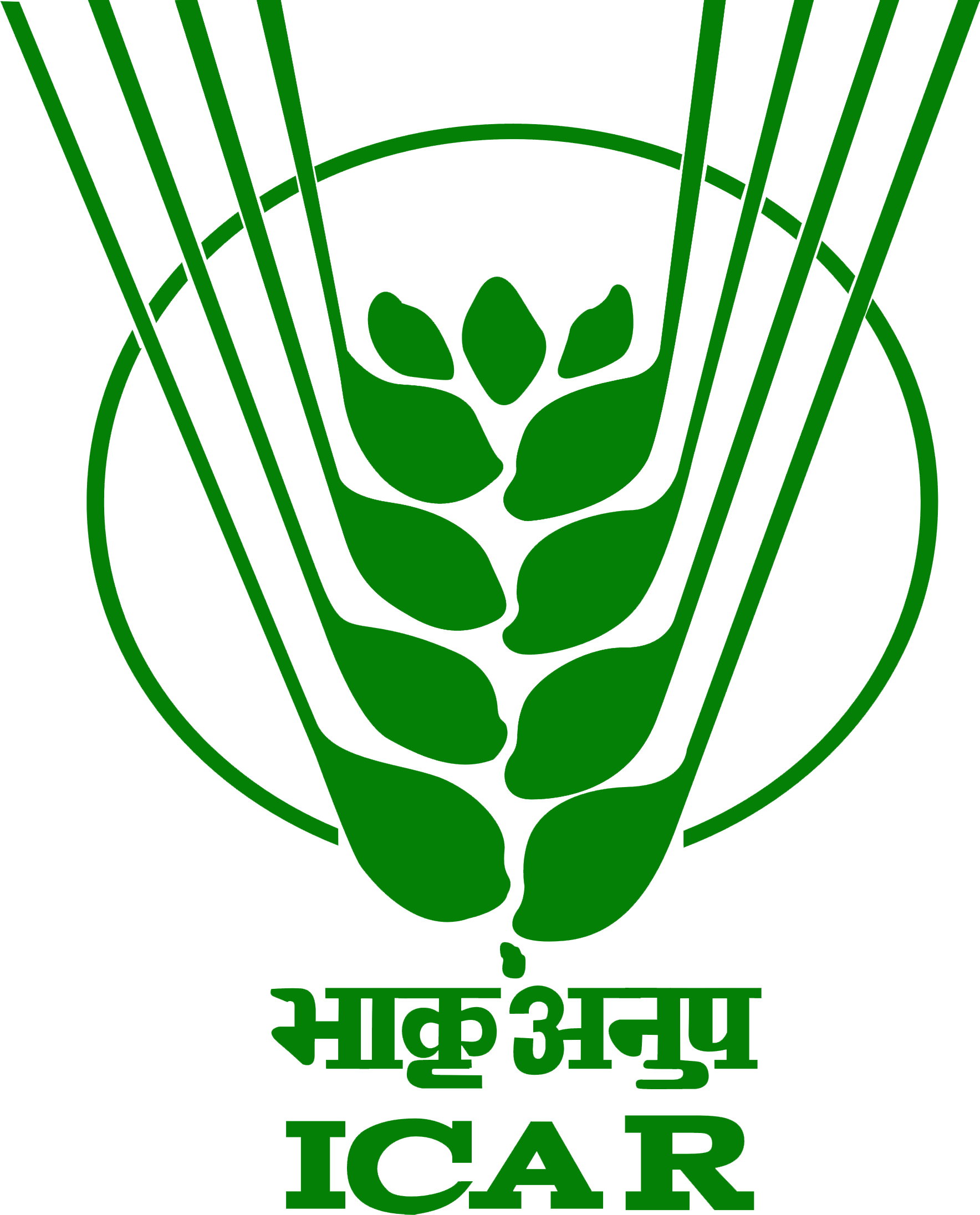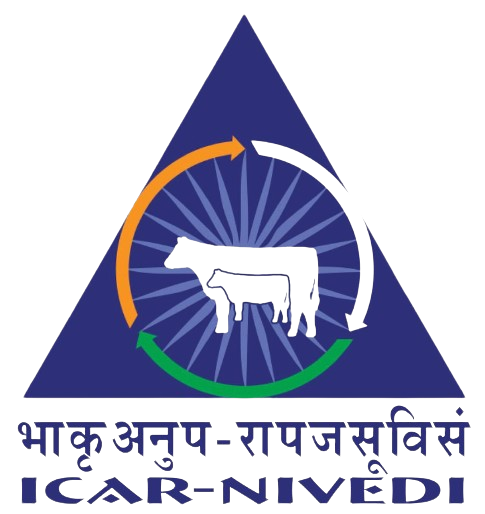About Us
History
In 1987, the Indian Council of Agricultural Research (ICAR) established the All India Coordinated Research Project on Animal Disease Monitoring and Surveillance (AICRP on ADMAS) with four regional centers located in Bangalore, Pune, Ludhiana, and Kolkata.
On April 1, 2000, the project was upgraded to the Project Directorate on Animal Disease Monitoring and Surveillance (PD_ADMAS) during the IX Plan. This initiative gained further momentum in the X Plan with the inclusion of:
- Five additional collaborating units.
- Two mission-mode NATP projects:
- Animal Health Information System & Data Monitoring System (AHIS_DMS) – 17 collaborating units.
- Weather-Based Animal Disease Forecasting (WB_ADF) – 20 collaborating units.
Combining data from AHIS_DMS and WB_ADF, the National Animal Disease Referral Expert System (NADRES) was developed as an interactive, dynamic, and relational online disease forewarning system. The primary goal of NADRES is to enhance early warning and response capabilities for animal disease outbreaks in India, benefiting farmers and policymakers.
Initially, 15 AICRP Centers contributed disease event information until 2015. Later, in 2015, 16 additional AICRP centers were added, bringing the total to 31 centers across India. These centers provide monthly disease event data, which is recorded into the NADRES database using a double-data-entry model for accuracy.
Early Warning System
An early warning system is crucial for predicting disease outbreaks and preventing their spread. Controlling epidemics in the early stages is more cost-effective than tackling them once they become widespread. For zoonotic diseases, early alerts can also help prevent human infections and fatalities.
Development of NADRES
The National Institute of Veterinary Epidemiology & Disease Informatics (ICAR-NIVEDI) developed NADRES, a software system that:
- Systematically collects, verifies, and analyzes disease event data.
- Integrates inputs from AICRP-ADMAS, unofficial media reports, and informal networks.
- Collaborates with State Animal Husbandry Departments, Universities, and NGOs.
- Provides forewarning on potential disease outbreaks.
Collaborative Approach
NADRES enhances national preparedness for epidemic diseases by facilitating a joint response mechanism between:
- ICAR-NIVEDI
- Central & State Animal Husbandry Departments
- AICRP on ADMAS and other collaborating agencies
This collaboration allows for rapid response, improved disease control strategies, and better epidemiological analysis. By sharing outbreak assessments, stakeholders can implement coordinated measures to control and prevent animal and zoonotic disease threats in India.
Specific Objectives of NADRES
- Enhance preparedness: Enable state and central animal husbandry departments to prevent animal disease incursions and ensure rapid containment.
- Timely Alerts: Improve the timeliness and sensitivity of disease alerts.
- Epidemiological Monitoring: Strengthen the detection of exceptional epidemiological events at the national level.
- Transparency: Foster better communication and coordination among stakeholders.
- Surveillance & Monitoring: Strengthen national surveillance systems and veterinary laboratory networks across the country.
- Preparedness for Epidemics: Improve national response strategies for animal and zoonotic epidemics.
- Technical Support: Provide expert guidance to states on disease outbreak control at the animal-human interface.
Disease Outbreak Database
The database on disease outbreaks is collected through the networks of AICRP on ADMAS with 31 centers across the country. It provides regular outbreak information, including the date and location of outbreaks, susceptible populations, deaths, and attacks. Disease data, obtained in a structured format, is entered into the NADRES database using a double-data-entry validation method to ensure zero errors. Since 1990, the database has been enhanced with the inclusion of an additional 16 AICRP centers.
Risk Factors Database
The risk factors database includes various weather parameters from multiple sources, such as:
- Weather Parameters: Monthly precipitation (mm), sea level pressure (millibar), minimum & maximum temperature (°C), wind speed (m/s), vapor pressure (millibar), soil moisture (%), perceptible water (mm), potential evaporation transpiration (mm), and cloud cover (okta).
- Data Sources: Extracted from National Centre for Environmental Prediction (NCEP), Indian Meteorological Department (IMD), National Innovations on Climate Resilient Agriculture (NICRA), and other sources.
- Remote Sensing Variables: Normalized Difference Vegetative Index (NDVI) and Land Surface Temperature (LST) from MODIS, LANDSAT, LISS III, or IV satellite images.
- Livestock Data: Population and densities extracted from the Livestock Census 2012.
Artificial Intelligence Algorithm
Various statistical and machine learning models are utilized for predictive analysis. These include:
- Regression Models: Generalized Linear Models (GLM) and Generalized Additive Models (GAM).
- Machine Learning Methods:
- Random Forest (RF)
- Boosted Regression Tree (BRT)
- Artificial Neural Network (ANN)
- Multiple Adaptive Regression Spline (MARS)
- Flexible Discriminant Analysis (FDA)
- Classification Tree Analysis (CTA)
- Prediction & Model Evaluation: The models generate different types of model objects, which are used with the predict function for forecasting. Response plots are created to analyze and interpret model predictions.
- Model Assessment: Various statistical measures are used to evaluate model performance, ensuring accurate predictions and identifying spatial patterns.
Difference between NADRS and NADRES
| Feature | NADRS | NADRES |
|---|---|---|
| System Type | National Animal Disease Reporting System | National Animal Disease Referral Expert System |
| Developed by | Dept. of Animal Husbandry Dairying and Fisheries, Ministry of Agriculture, Govt. of India | ICAR - National Institute of Veterinary Epidemiology & Disease Informatics (ICAR-NIVEDI) |
| Number of Centers Involved | 7500 block-level veterinary hospitals across India | 31 AICRP Centers |
| Data Entry | Real-time disease reporting from block-level veterinary hospitals | Data from AICRP centers, meteorological data, and other sources |
| Climatic Data Integration | Not Integrated | Integrated with climatic and non-climatic data (LST, precipitation, wind speed, NDVI, etc.) |
| Forecasting Method | Manual Data Analysis | Automated Forewarning System using Statistical Models and Machine Learning Algorithms |
| Main Focus | Disease status monitoring and reporting across India | Forecasting the occurrence of livestock diseases in advance using data integration and modeling |
| Risk Prediction | Disease occurrence reporting | Two months advance disease risk prediction and spatial pattern identification |
| Use of Machine Learning | Not Applied | Uses models like Random Forest (RF), Artificial Neural Networks (ANN), and others for prediction |



